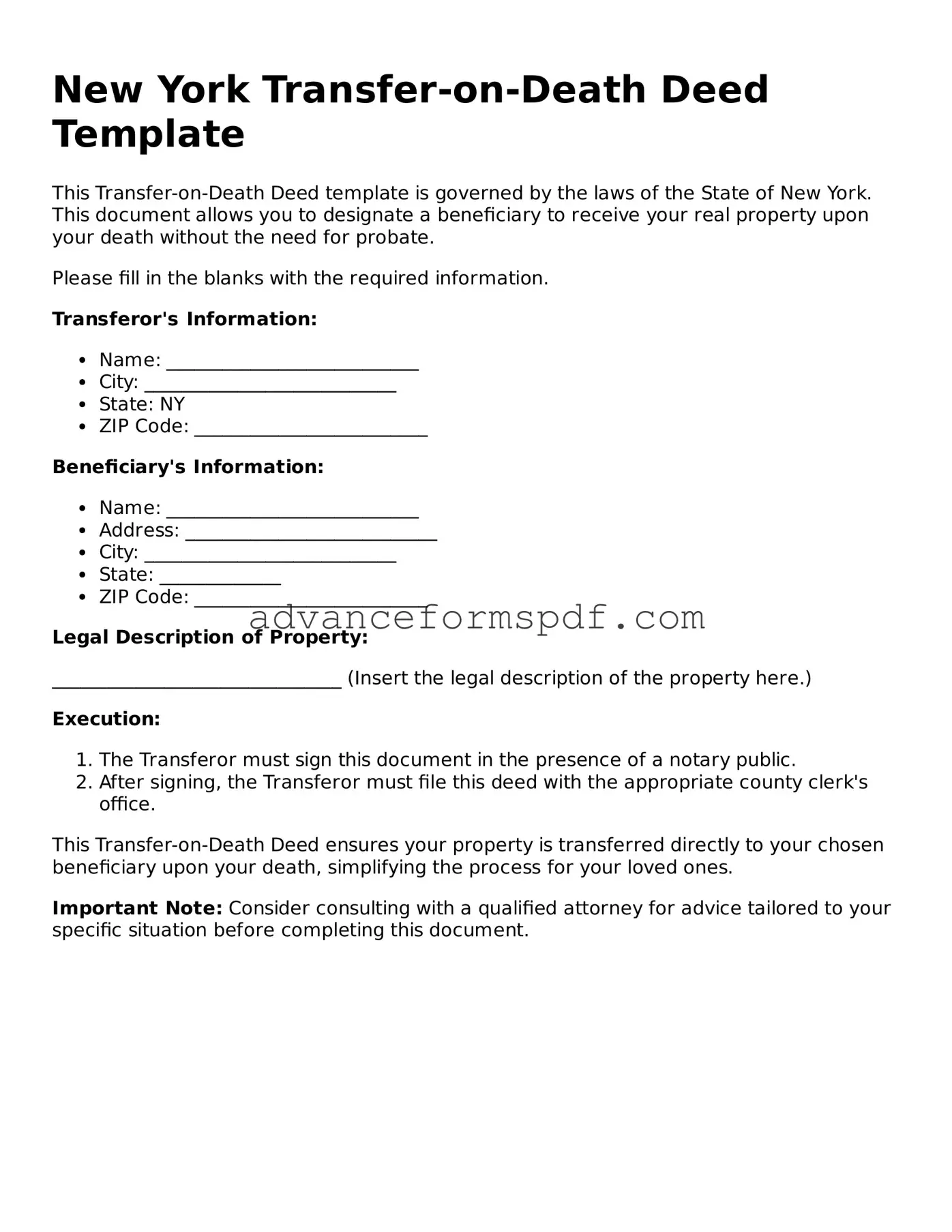New York Transfer-on-Death Deed Template
This Transfer-on-Death Deed template is governed by the laws of the State of New York. This document allows you to designate a beneficiary to receive your real property upon your death without the need for probate.
Please fill in the blanks with the required information.
Transferor's Information:
- Name: ___________________________
- City: ___________________________
- State: NY
- ZIP Code: _________________________
Beneficiary's Information:
- Name: ___________________________
- Address: ___________________________
- City: ___________________________
- State: _____________
- ZIP Code: _________________________
Legal Description of Property:
_______________________________ (Insert the legal description of the property here.)
Execution:
- The Transferor must sign this document in the presence of a notary public.
- After signing, the Transferor must file this deed with the appropriate county clerk's office.
This Transfer-on-Death Deed ensures your property is transferred directly to your chosen beneficiary upon your death, simplifying the process for your loved ones.
Important Note: Consider consulting with a qualified attorney for advice tailored to your specific situation before completing this document.
